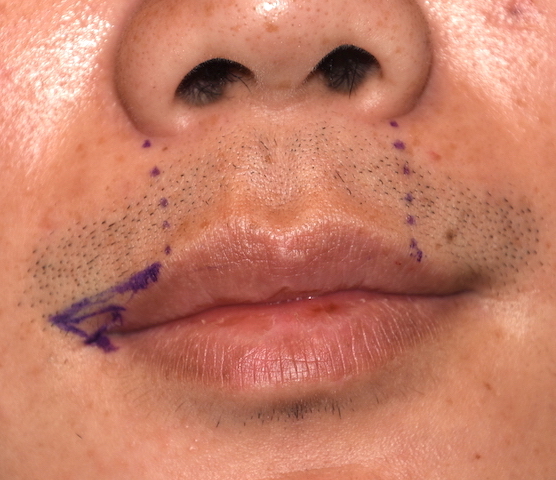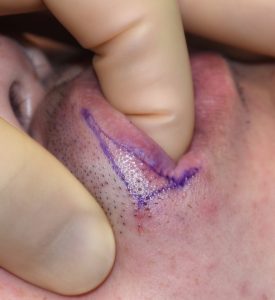Background: Facial asymmetries can be as variable as the features on a person’s face. They can be caused by hypoplasia (undergrowth) or hyperplasia (oevrgrowth) or they can affect the upper part of the face most severely and less so at the bottom…and vice versa. While the lateral features of the face are the most significantly affected, more central facial features can exhibit asymmetries although always less severely.
One of the more central features often affected in facial asymmetries is the lips, specifically the corner of the mouth. Depending on the type of facial asymmetry the corner of the mouth can be lower or higher than the unaffected opposite side. Careful inspection shows that it is more than just the mouth corner alone. The lateral sides of the lips will also be asymmetric as it is not possible to have mouth corner asymmetry and the lips right next to it not be affected.
In relocating the asymmetric mouth corner the associated upper or lower lip must be relocated with it. If the mouth corner is lower then the outer portion of the upper lip must be similarly moved upward. Conversely if the mouth corner is higher the outer aspect of the lower lip must be similarly moved with it.
Case Study: This male had overall plagiocephaly of which he had a downward tilt to the right side of his mouth on the same side as the flatter occiput. Linear measurements from the nostril base show it to be 4mms over. Beginning a little lateral to the height of the cupid’s bow the vermilion-skin border of the upper tilted downward to the mouth corner and was thinner.
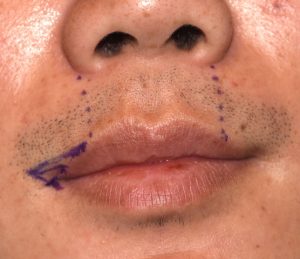
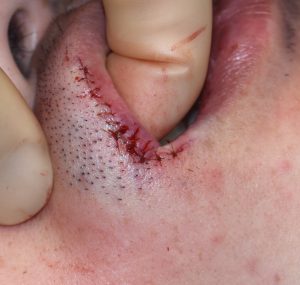
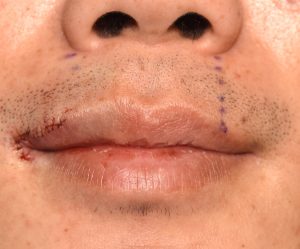
Case Highlights:
1) Corner of mouth and lip asymmetries are common in facial asymmetry.
2) Leveling the smile line can largely be done by a combined corner of mouth and lateral upper lip lift.
3) The extended pennant technique for corner of mouth and lateral lip lifts enables the scar line to remain at the vermilion-cutaneous border.
Dr. Barry Eppley
Indianapolis, Indiana

